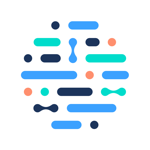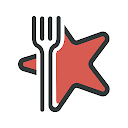Ada 3.6 for Android
- Description
- What's new
Ada Health began in Berlin as a decision-support tool for doctors, but the free Android version most people know today is a pocket-size symptom checker that handles more than fifteen million assessments each month. When you open the app in 2025 it greets you with one question “What’s bothering you?”, and then follows up with a chat style interview about pain location, duration, travel history, medicines, and so on. Each answer feeds a medical knowledge graph of roughly thirty-four thousand coded conditions. In less than a minute the app returns its three likeliest explanations and a plain warning about how quickly you should seek care: self-manage at home, book a routine appointment, or head to an emergency department now.
The engine running these suggestions is a mix of old-school probability math and a newer large language model nicknamed Apollo. The Bayesian core, a probabilistic reasoning engine, weighs your answers against millions of stored patterns; Apollo rewrites the clinical output into clear, fifth-grade English and tacks on a short next-step list — examples include “schedule a blood test” or “keep a fever log for forty-eight hours.” All processing happens on Ada’s German servers, which means the phone holds only the questionnaire and the short report, a design choice that helps with both privacy and battery life.
Peer-reviewed tests back the system up. A 2023 study in BMJ Digital Health ranked Ada first among twenty-four symptom apps for matching the correct condition, and tied for first on safe triage advice. The company is quick to point out that the tool does not give formal diagnoses; it is described as informational triage, nothing more. Even so, hospitals in the United Kingdom, California, and West Africa now embed Ada’s programming interface into their own patient portals, reducing nurse call volume and helping doctors receive cleaner case histories.
Privacy rules follow Europe’s stringent GDPR law. You can stay anonymous and let each assessment vanish after thirty days, or you can open a free account that stores reports in an encrypted cloud vault. Ada says no user records are sold, and only stripped-down data sets are used to tune the model.
Where does the app shine in everyday life? The classic use case is the parent of a sick child at 2 AM who wants to know whether to wait until the clinic opens. It is also good at sorting messy, multi-symptom stories — things like two weeks of fatigue plus joint pain — where simpler web searches often lead to panic. Because its library reaches into rarer diseases, travelers and migrants who present unfamiliar symptoms gain a realistic first view instead of a generic cold-flu guess. The interface now supports eleven languages, offers a read-aloud button, and switched to a dyslexia-friendly font in the spring 2025 release.
Drawbacks exist. The free version ends once recommendations appear; if you want live chat with a nurse you must link out to a paid telehealth partner. Each assessment pings the server many times, so heavy use can chew through mobile data on slow connections. In the United States, plenty of insurance portals still refuse to read exported PDF histories, forcing patients to retype everything.
Ada remains free for personal use. This year the company introduced an optional paid monthly plan that unlocks unlimited PDF downloads, sync with Google Fit, and a timeline view that tracks recurring symptoms. Hospitals and insurers license Ada on a per-assessment fee that beats the cost of nurse triage calls by a wide margin.
Upcoming 2025 features include an offline “rapid mode” that keeps a pared-down library of common ailments on the phone for low-bandwidth regions and a mental-health screener co-developed with the University of Zurich.
Ada Health will not replace a clinician, but it does shorten the gap between “I don’t feel right” and “Here is what I should do next.” With solid medical data, readable explanations, and strong privacy controls, it has become one of the smarter ways to carry basic triage in your pocket.



Comments
Please add a comment explaining the reasoning behind your vote.